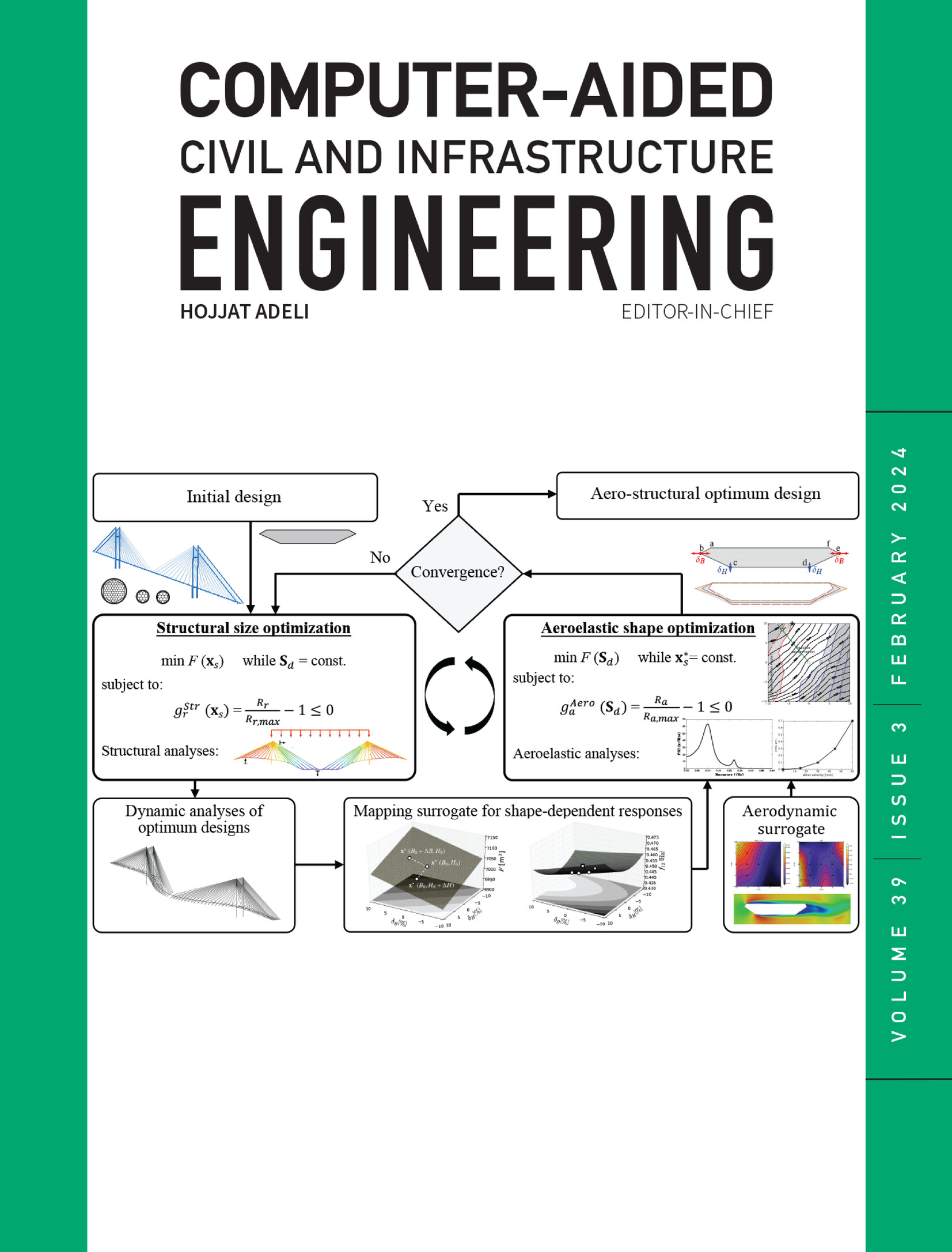通过涂鸦注释进行弱监督结构组件分割
IF 8.5
1区 工程技术
Q1 COMPUTER SCIENCE, INTERDISCIPLINARY APPLICATIONS
引用次数: 0
摘要
对基础设施检测图像中的结构部件进行分割,对于自动、准确地进行状态评估至关重要。虽然深度神经网络在这一任务中具有巨大潜力,但现有方法通常需要完全注释的地面实况掩模,而创建地面实况掩模耗时耗力。本文介绍了涂鸦监督结构组件分割网络(ScribCompNet),这是第一种只需要涂鸦注释就能进行多类结构组件分割的弱监督方法。ScribCompNet 采用双分支架构,具有更高分辨率的细化功能,可增强精细度检测。它通过一个综合目标函数,结合涂鸦注释、动态伪标签、语义上下文增强和规模自适应和谐损失,将监督范围从已标记像素扩展到未标记像素。实验结果表明,ScribCompNet 的性能优于其他涂鸦监督方法和大多数完全监督的同类方法,平均交集大于联合(mIoU)率达到 90.19%,标注时间减少了 80%。进一步的评估证实了新设计的有效性和强大的性能,即使是质量较低的涂鸦注释也不例外。本文章由计算机程序翻译,如有差异,请以英文原文为准。
Weakly-supervised structural component segmentation via scribble annotations
Segmentation of structural components in infrastructure inspection images is crucial for automated and accurate condition assessment. While deep neural networks hold great potential for this task, existing methods typically require fully annotated ground truth masks, which are time-consuming and labor-intensive to create. This paper introduces Scribble-supervised Structural Component Segmentation Network (ScribCompNet), the first weakly-supervised method requiring only scribble annotations for multiclass structural component segmentation. ScribCompNet features a dual-branch architecture with higher-resolution refinement to enhance fine detail detection. It extends supervision from labeled to unlabeled pixels through a combined objective function, incorporating scribble annotation, dynamic pseudo label, semantic context enhancement, and scale-adaptive harmony losses. Experimental results show that ScribCompNet outperforms other scribble-supervised methods and most fully-supervised counterparts, achieving 90.19% mean intersection over union (mIoU) with an 80% reduction in labeling time. Further evaluations confirm the effectiveness of the novel designs and robust performance, even with lower-quality scribble annotations.
求助全文
通过发布文献求助,成功后即可免费获取论文全文。
去求助
来源期刊
CiteScore
17.60
自引率
19.80%
发文量
146
审稿时长
1 months
期刊介绍:
Computer-Aided Civil and Infrastructure Engineering stands as a scholarly, peer-reviewed archival journal, serving as a vital link between advancements in computer technology and civil and infrastructure engineering. The journal serves as a distinctive platform for the publication of original articles, spotlighting novel computational techniques and inventive applications of computers. Specifically, it concentrates on recent progress in computer and information technologies, fostering the development and application of emerging computing paradigms.
Encompassing a broad scope, the journal addresses bridge, construction, environmental, highway, geotechnical, structural, transportation, and water resources engineering. It extends its reach to the management of infrastructure systems, covering domains such as highways, bridges, pavements, airports, and utilities. The journal delves into areas like artificial intelligence, cognitive modeling, concurrent engineering, database management, distributed computing, evolutionary computing, fuzzy logic, genetic algorithms, geometric modeling, internet-based technologies, knowledge discovery and engineering, machine learning, mobile computing, multimedia technologies, networking, neural network computing, optimization and search, parallel processing, robotics, smart structures, software engineering, virtual reality, and visualization techniques.

 求助内容:
求助内容: 应助结果提醒方式:
应助结果提醒方式:


